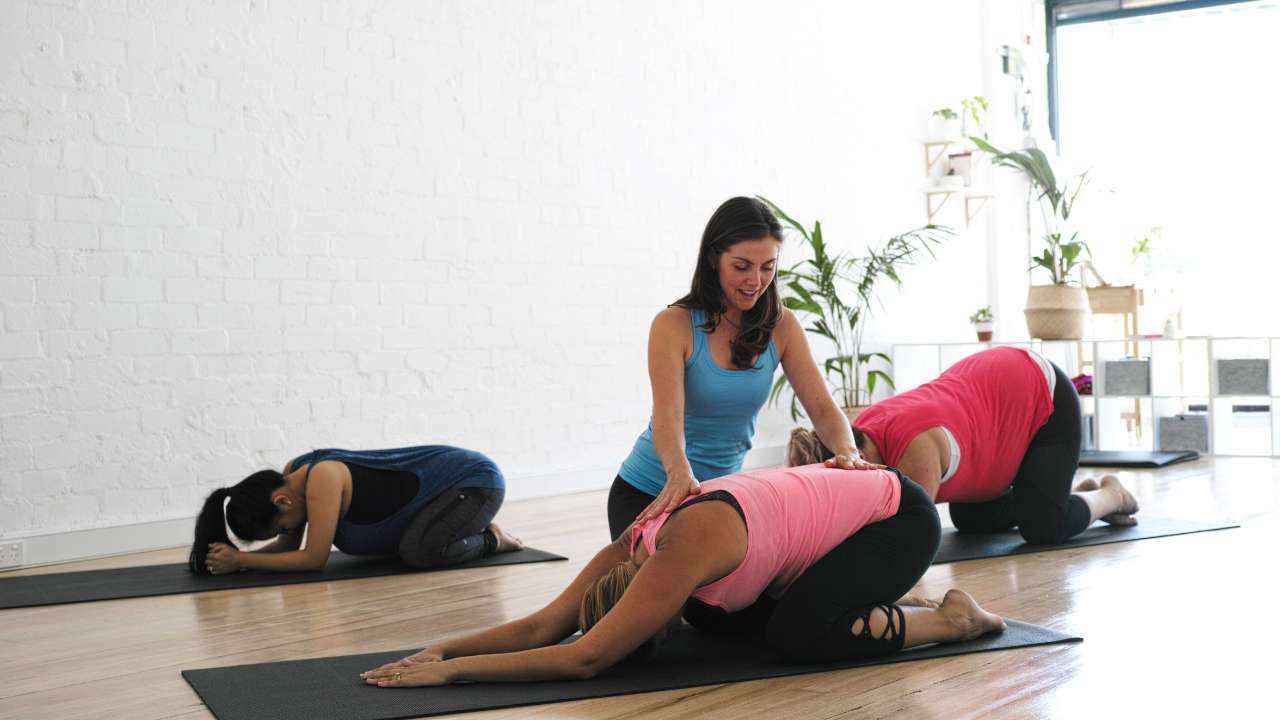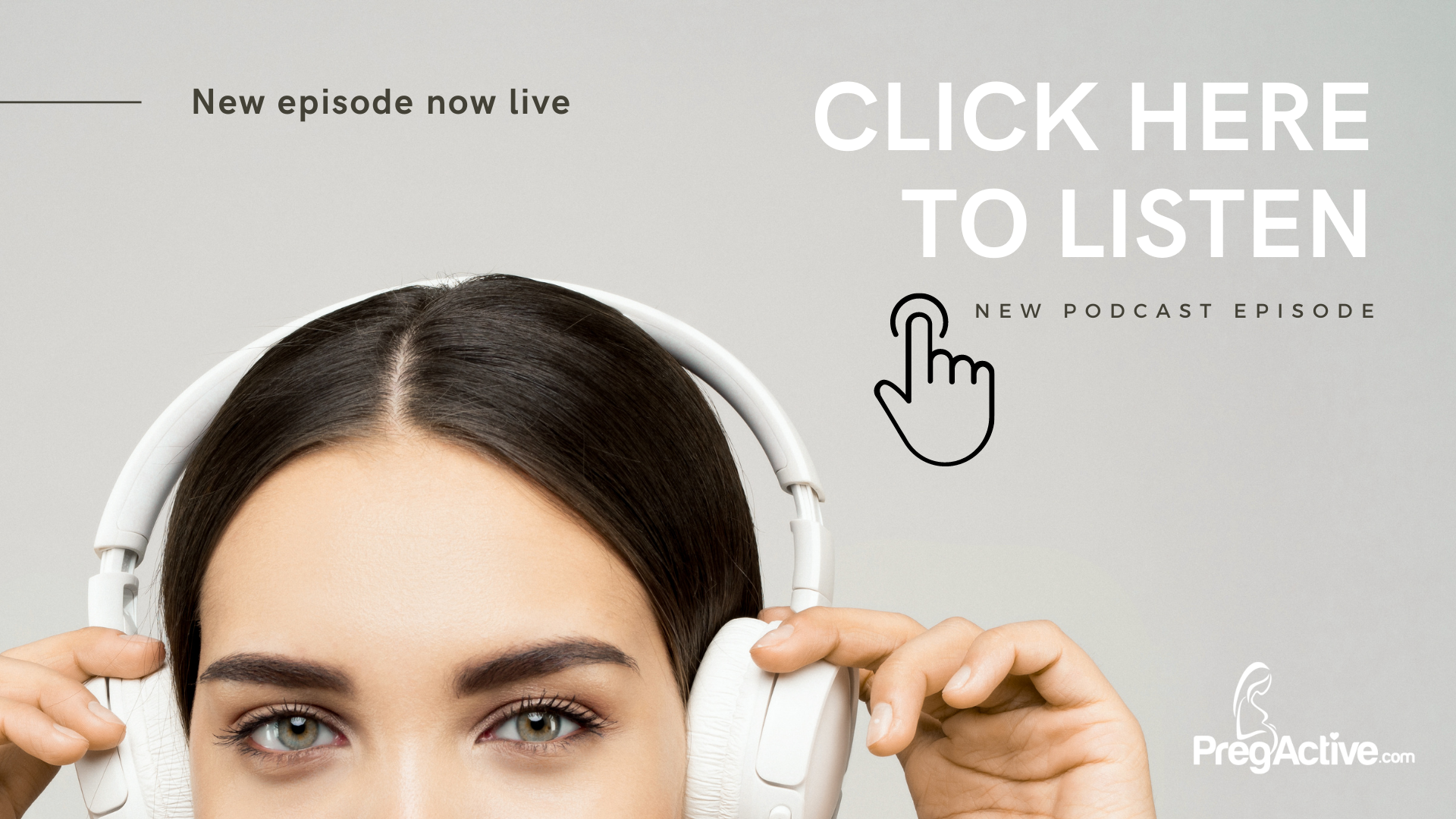12 Pregnancy Exercise Mistakes You MUST Avoid
Nov 01, 2022
Pregnancy Exercise Mistakes
I want to share with you the biggest pregnancy exercise mistakes I have seen so you can avoid causing unwanted harm to you and baby.
All too often pregnant women are feeling unsure about how to exercise safely in their pregnancy to optimize their health and keep their growing baby safe.
As a prenatal exercise expert with over 15 years of experience in helping pregnant women stay fit and healthy, I'm here to help you. It's my mission to help women stay fit and healthy during pregnancy.
Exercise Mistakes to Avoid
So let's get started on the pregnancy exercises mistakes you must avoid in order to keep both you and baby safe!
1. You workout like you did before pregnancy.
This is quite common as many women do not know how to modify their workouts to adjust to their ever-changing and growing belly.
The exercises you did when planning for pregnancy could now be dangerous for both you and your growing baby so please learn about the exercises you must now avoid.
2. Avoiding pelvic floor exercises.
It's easy to skip your pelvic floor exercises as you don't see these muscles.
You will benefit later on from having a strong pelvic floor as it will reduce the symptoms of urinary incontinence.
It will also help you after childbirth to get back to the type of exercise you love and will improve your sensation during sex.
3. Overheating (Hot Yoga, Saunas, Very Intense Cardio)
Core body temperature above 102°F (39°C) in the first trimester is linked to neural tube defects; later it can reduce placental blood flow.
Fix: Keep intensity at “can still talk” level, hydrate like crazy, avoid Bikram/hot Pilates.
4. Doing Traditional Crunches or Sit-Ups
These increase intra-abdominal pressure and can worsen or cause diastasis recti (abdominal separation).
Fix: Switch to deep-core–friendly moves (e.g., transverse abdominis activations, side planks, bird-dog).
5. You continue to plank
One of the biggest pregnancy exercise mistakes I hate to hear is that a pregnant mama is planking.
Your stomach muscles need to be able to stretch to make space for your baby. They also must be strong enough to support your growing body.
During pregnancy, I want you to focus on exercises that will help to strengthen your deep core.
And I want you to avoid crunches (V sit up) and planking as they will only cause greater strain and possible injury.
6. Not Activating Core Properly
Now, let's get right into this topic. I'm a believer that everyone should have good core unit activation.
So many people suffer from back aches and poor movement quality, when, if they had a good strong, function core they may not be in so much discomfort.
It's actually so simple and basic that people overlook it and look for something harder.
The key is to start with the foundations, master them and then progress using the foundations to add challenge. This is exactly what we do in my PregActive exercise programs.
And it's certainly what I recommend you do to help you now in your pregnancy, but also very importantly, in your postnatal recovery.
Okay, so you want to first think about your pelvic floor.. Imagine a tube of toothpaste.
If you don't put the lid on the toothpaste tube and you squeeze the middle, the toothpaste comes out.
7. Extreme Stretching or Deep Twists
Relaxin hormone makes every ligament looser - you can overstretch or destabilize the pelvis/SI joints and spine. Closed twists also compress the belly.
Fix: Stretch only to mild tension, open the twists (or skip them), avoid deep forward folds after ~30 weeks.
8. Holding Your Breath (Valsalva Maneuver)
Many women unconsciously hold their breath during effort (especially with weights or core work). This spikes blood pressure and reduces oxygen delivery.
Fix: Breathe out on exertion, in on the release. Practice “blow before you go.”
Are you someone that holds your breath when you exercise?
You are certainly not alone in the world. It surprises me how many people can not comfortably breath when exercising.
Often people say 'I like yoga, but the breathing stresses me out'.
Honestly, I have to laugh at this, because breathing should be the foundation, with core unit activation coming next and then movement.
Often people want results fast, so they do the reverse.
They move, then secondly think about their core so they 'suck in' and then freak out about their breathing.
Can you image how imbalanced this will make everything?
And it certainly won't make the exercise enjoyable.
9. Exercising in the Supine Position After the First Trimester
Lying flat on your back after approximately 16–20 weeks can compress the vena cava, reducing blood flow to your heart and brain (and baby).
This can cause dizziness, low blood pressure, and decreased oxygen to the placenta.
Fix: Do all floor exercises on your side, inclined, seated, or standing.
10. High-Impact or Contact Sports After the First Trimester
Running is usually fine if you were a runner pre-pregnancy, but jumping, kickboxing, soccer, horseback riding, or anything with fall/jarring risk becomes dangerous as balance shifts and joints loosen.
Fix: Switch to low impact (walking, swimming, stationary bike, elliptical).
11. Lifting Too Heavy Without Guidance
Heavier weights are often safe if you’re experienced and use perfect form, but many women (and trainers) don’t adjust grip width, breathing, or core bracing.
Fix: Reduce load 20–30 % from pre-pregnancy maxes, prioritize form, stop any exercise that causes “coning” of the belly.
12. Ignoring Coning/Doming of the Abdominal Wall
If your midline bulges outward like a dome during any move, that’s a sign of poor core pressure management and risk for diastasis.
Fix: Immediately stop that exercise and modify (exhale + gentle TA engagement before movement).
Healthcare Provider
Always consult your doctor or midwife before starting or continuing an exercise routine during pregnancy. Certain conditions may require you to avoid exercise or stick to specific low-impact activities.
Do not Over-exert Yourself
You will often hear me say that pregnancy isn’t the time to push your limits. Avoid high-intensity workouts that leave you breathless or exhausted.
The goal is to maintain fitness, not set personal records.
Don't Ignore Your Body
Pregnancy changes how your body responds to exercise. Stop immediately if you experience symptoms like:
1. dizziness
2. shortness of breath
3. chest pain
4. vaginal bleeding
5. contractions
6. reduced fetal movement.
These could indicate overexertion or a more serious issue requiring medical attention.
Maintain Correct Technique
As your belly grows, your center of gravity shifts, which can throw off your balance and form.
Avoid exercises that strain your lower back or abdominal muscles, like deep twists or heavy planks.
Look after Baby
However, there are common mistakes that many women make when exercising during pregnancy that can be harmful to both mom and baby.
We will cover important topics such as the risks of overexertion, improper form, and exercises to avoid during pregnancy.
Learn from Mistakes
By learning about these mistakes and how to avoid them, you can have a safe and effective workout routine throughout your pregnancy.
If you're expecting or know someone who is, be sure to watch this video to ensure a healthy and happy pregnancy journey.
Don't let these exercise mistakes derail your fitness goals during this special time.
Remember, always consult with your healthcare provider before starting any new exercise routine during pregnancy.
High-Impact Exercises
High-impact exercises can pose significant risks during pregnancy, primarily because they involve movements that are jarring to the body and may lead to increased pressure on the pelvic floor.
Do you know that certain activities like running, jumping, or any exercise that involves sudden starts and stops can lead to discomfort and potential injury?
The added weight and shift in the center of gravity during pregnancy can also affect balance and coordination, increasing the risk of falls, which can be detrimental to both mother and fetus.
Body Changes when Pregnant
It's important to recognize that the body undergoes many changes during pregnancy, including increased joint laxity due to hormonal shifts which can make joints more vulnerable to injury.
Therefore, it's critical to adjust exercise routines to accommodate these changes and avoid high-impact exercises that may exacerbate these risks.
Be Empowered
We want you feeling empowered, informed and confident in your exercise choices, because you deserve it!
It is worthwhile learning about pregnancy hormones like relaxin. This hormone help prepare the body for childbirth by loosening ligaments and joints, possibly leading to an increased range of motion.
There is a negative side to this however in that this natural loosening can also make it easier to overstretch and potentially cause injury.
It's essential to be cautious with activities that involve deep stretches or extreme ranges of motion, such as advanced yoga poses or gymnastics.
Overstretching can lead to:
- strains
- sprains
- joint dislocation
Make sure you pay close attention to your body's signals during exercise and avoid pushing yourself into uncomfortable positions.
Gentle stretching when pregnant within a comfortable range is beneficial, but it's crucial to avoid the temptation to stretch further than usual just because the body seems more capable of it during pregnancy.
Contact Sports
Contact sports such as soccer, basketball, hockey, and boxing should be avoided during pregnancy due to the high risk of abdominal trauma.
These sports often involve unpredictable physical contact that can lead to injury, not just from the sport itself but also from accidental impacts from other players.
Avoid Direct Contact
The biggest concern I have with contact sports is the potential for a direct blow to the abdomen, which can be dangerous for the developing baby.
Additionally, as pregnancy progresses, the body's center of gravity shifts, which can affect balance and make falls more likely.
This shift, combined with the natural joint loosening that occurs during pregnancy, can make even non-contact elements of these sports riskier.
So mama, I want you to avoid these activities and seek out safer exercise options.
Here's my podcast.
Fitness and Safety
So, I want you to avoid the exercises I have listed above. But there are many other exercises that can be safely modified to accommodate the changing body with each trimester.
Example
Instead of high-impact jumping or running, pregnant women can switch to low-impact activities like walking when pregnant or using an elliptical machine.
Strength training can continue with modifications, such as avoiding heavy weights or exercises that involve lying flat on the back after the first trimester.
Listen to Your Body
Exercises that require balance, such as certain standing yoga poses, can be modified by using support like a chair or wall to prevent falls.
It's crucial to listen to the body and make adjustments as necessary, prioritizing stability and comfort over intensity or performance.







